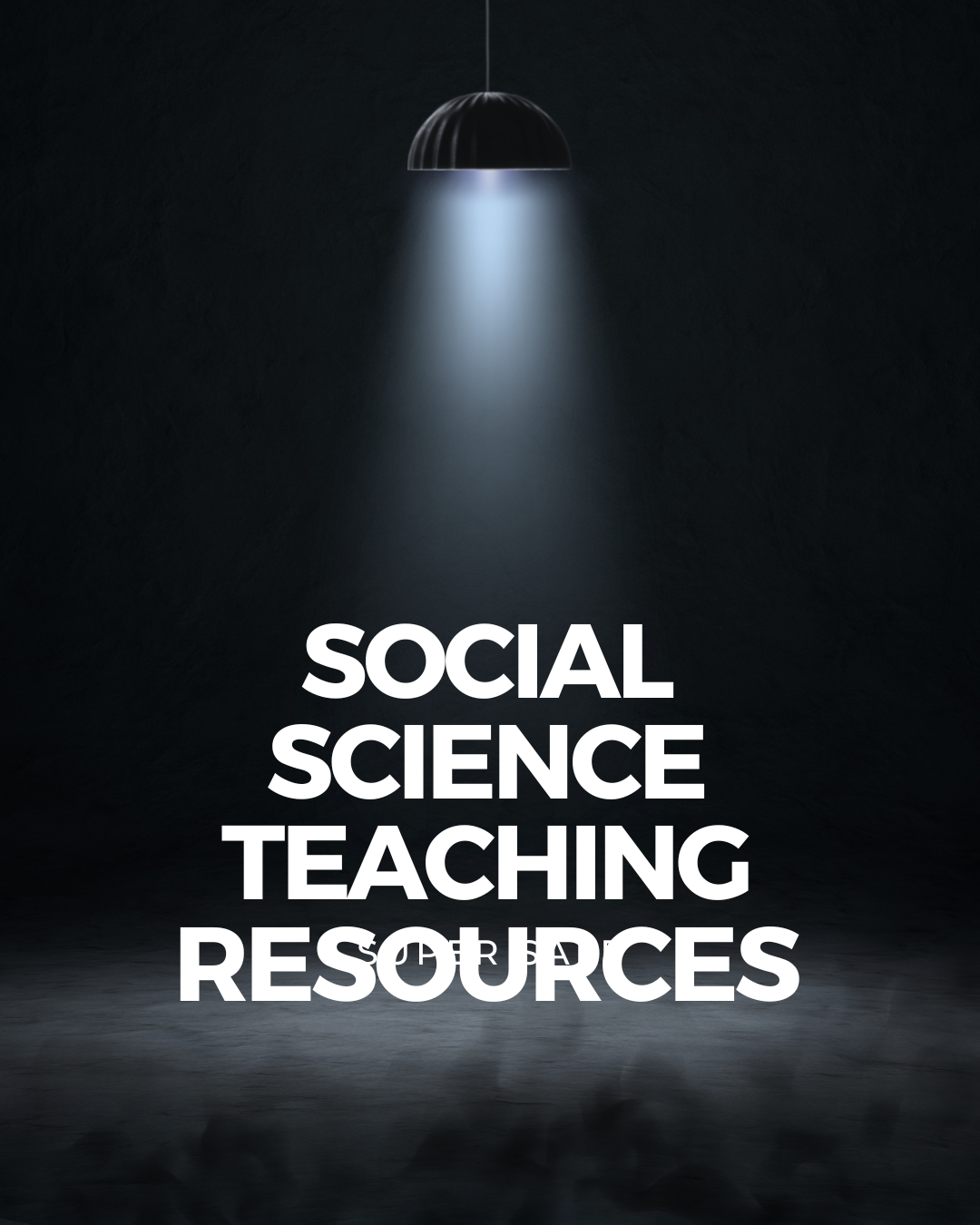Social Science Teaching Resources for CBSE & Beyond
Teaching Social Science effectively cannot be done with textbooks alone—it needs a range of resources that breathe life into historical events, political ideas, geographical trends, and economic concepts in the classroom. CBSE teachers and teachers outside the board need access to organized, interactive, and curriculum-based teaching resources to enable their students to comprehend and grasp sophisticated concepts. With competency-based learning and interactive pedagogy, the importance of teaching aids such as digital aids, visual maps, worksheets, quizzes, and videos has become more paramount than ever before. CBSE‘s syllabus with its framework is a strong and solid base, but to really activate students and get them exam and real-world thinking ready, teachers need to surpass conventional texts. This reference walks through a vast array of Social Science teaching materials that can enhance lesson presentation, support multiple learning styles, and make classrooms more engaging and effective—for CBSE and other educational systems.
Social Science Teaching Resources for CBSE & Beyond
Introduction:
In the dynamic classrooms of the present day, Social Science is not about memorizing historical dates or definitions any more. It‘s about comprehending society, relating past with present, and sharpening critical thinking. With the Central Board of Secondary Education (CBSE) moving towards competency-based teaching and outcome-based learning, the Social Science teacher now requires varied and well-aligned teaching materials. Whether you’re teaching CBSE students or working in another educational board, having access to the right tools and materials can transform your classroom into an engaging, meaningful space for learners.
Understanding the Change: Learning Outcomes and Competency-Based Education
Recent curricular changes by CBSE focus on learning outcomes—what learners need to know, understand, and be able to do following each subject.
This change requires pedagogical resources beyond textbooks to impart 21st-century competencies such as analytical thinking, empathy, and data
interpretation.
For instance:
In Geography, they’re not just required to memorize maps but interpret climate data.
In Civics, they‘re expected to grasp democratic concepts and apply them to real-life incidents.
Competency-based education emphasizes application and conceptual clarity over theoretical knowledge.
This has generated increasing demand for practical, activity-based, and visually–oriented learning tools.
Crucial Teaching Resources for CBSE Classrooms
Teaching in CBSE classrooms involves a blend of classical and contemporary tools that match the curriculum and enable competency-based learning.
Some of the most crucial resources every Social Science teacher must employ to facilitate clarity, interest, and exam preparation are listed below.
NCERT Textbooks – The Core Reference
NCERT books are the basis for the CBSE curriculum. They are designed to encourage conceptual understanding, critical thinking, and
core competence building.
The language is child-friendly, the material is mapped to learning outcomes, and the chapters are supplemented with in-text questions, case studies, and
activities.
Why it‘s important?
Board exam questions are directly linked to NCERT content.
It provides a specific road map for lesson planning and unit planning.
Promotes value-based and application-based learning.
Tip: Utilize NCERT exercises to structure formative and summative assessments.
Sample Papers & PYQs – Exam Preparation Tools
CBSE Sample Papers as well as Previous Year Question Papers (PYQs) are essential tools for exam-focused teaching.
They assist teachers and students alike in appreciating the paper pattern, types of questions (MCQs, case-based, assertion-reason), and
marking scheme.
Teachers’ benefits
Assists in readying students for board-level requirements.
Directs the choice of significant topics and types of questions.
Facilitates practice tests and revision techniques.
Tip: Practice sample papers in class through time-limited exercises to recreate exam situations.
Diksha App & e-Pathshala – Official Digital Resources
With CBSE encouraging digital learning, the Diksha App and e-Pathshala websites have become official and reliable sources of teaching-learning materials.
Diksha App
Provides lesson plans, worksheets, interactive material, and videos.
Resources are aligned with particular chapters and learning objectives.
Teachers have the ability to upload and share their own content with colleagues.
e-Pathshala
Offers free access to NCERT textbooks, audio, and videos.
Helpful for online and offline classes.
Availble in several languages, catering to inclusive classrooms.
Why use them?
These websites ensure teaching remains in sync with CBSE‘s competency-based reforms while it makes classrooms more interactive and accessible.
Through incorporating these crucial resources—NCERT textbooks, sample papers & PYQs, and digital platforms that are CBSE-approved—teachers can create a well-organized classroom setting that is exam-prepared and learner-engaging across various abilities.
Teaching Aids Other Than CBSE
Though CBSE gives a strong foundation for planned learning, effective Social Science instruction is more than textbooks and formal materials. Adding innovative teaching aids and learning tools from other learning boards enhances the learning experience and facilitates greater learning. These aids are particularly helpful in developing competencies such as critical thinking, teamwork, and communication.
Interactive Maps, Timelines, and Flashcards
Visual media facilitate complex or abstract subjects to comprehend and recall.
Maps enable students to better understand geopolitical ideas, historical facts, and the distribution of resources.
Printable outline maps or digital means such as Google Earth foster spatial learning.
Timelines create time sequence understanding in History, enabling students to associate events and realize cause-effect relationships.
Flashcards (either digital or manually created) are excellent for reviewing key terms, dates, definitions, and constitutional provisions in
subjects such as Civics and Economics.
They cater to visual learners and are ideal for rapid revisions, quizzes, or peer learning.
Debates, Role-Plays, and Group Activities
Active learning techniques make Social Science more interactive and applicable.
Debates enable students to discuss various viewpoints on political and social issues (e.g., dictatorship vs. democracy).
Role-plays dramatize historical events or parliamentary processes, promoting empathy and critical reasoning.
Group exercises and simulations foster teamwork, research skills, and greater awareness of practical applications.
Such activities enhance competency-based learning, particularly in subjects like decision-making, communication, and civic responsibility.
Resources for State Boards, ICSE, and International Curricula
Resources employed in other education systems can also be accessed by teachers:
State Board Resources:
Most state boards have content localized for providing local context and regional relevance, which is particularly helpful in Geography and History.
ICSE Curriculum:
With its emphasis on analytical writing and map work, ICSE materials present rich content for deeper investigation as supplementary resources.
International Boards (IB, Cambridge):
Focus on inquiry-based learning, global thinking, and interdisciplinary relationships—essential for teachers to develop 21st-century skills.
Resources such as ICivics.org, National Geographic Education, and BBC Bitesize provide prefabricated material that is aligned with international teaching standards and can be implemented in CBSE classrooms.
Including these teaching materials aside from the usual CBSE learning materials builds a more lively, inclusive, and skill-based classroom setting. Not only do they facilitate conceptual learning, but they also equip students to become educated, thoughtful, and engaged citizens of a global world.
Digital Resources and Platforms for Social Science Teaching
With the age of blended learning and digital classrooms, Social Science teachers have at their disposal a variety of web-based resources and platforms
that enrich delivery of lessons, boost student interaction, and facilitate competency-based learning.
Digital resources enable teachers to transcend the chalk-and-talk technique and present intangible concepts through images, simulations, and
interactive evaluations.
Presentation and Visual Tools
Google Slides / Microsoft PowerPoint: Perfect to make organized lessons with images, timelines, charts, and in-built videos.
Canva for Education: Provides stunning templates to create infographics, posters, and visual notes for subjects such as historical events, political
systems, or economic models.
Use case: Make a slide-based outline of the French Revolution or a poster on Sustainable Development Goals (SDGs).
Interactive Learning and Quiz Platforms
Kahoot / Quizizz / Mentimeter: Great for running live quizzes, polls, and summaries of important concepts.
Nearpod / Pear Deck: Software that converts presentations into interactive lessons with integrated questions, videos, and feedback choices.
These applications are particularly good for formative assessment and student engagement, even in big classrooms or distributed learning.
Mobile Learning Apps
Diksha App: CBSE-curriculum-based platform with access to textbooks, video lessons, worksheets, and teacher guides.
e-Pathshala: Provides free NCERT textbooks, audio material, and video lessons, in various languages.
Google Classroom / Microsoft Teams: For sharing assignments, disseminating resources, and student-teacher communication.
Tip: Utilize classroom apps to provide digital map work, short write-ups, or group discussions.
Subject-Specific Websites
ICivics.org: Offers gamified civics lessons—perfect to teach about democracy, constitution, and governance.
National Geographic Education: Provides videos, activities, and articles that are really useful for Geography subjects such as climate, population, and natural resources.
BBC Bitesize (History/Geography): Provides interactive multimedia content on historical timelines, case studies, and world events.
Video Platforms
YouTube Channels specific to Class 10 Social Science (such as for picture-based MCQs, map skills, and case-based questions).
Motivate teachers to develop their own explainer videos or tutorials on their own using software such as Loom, OBS Studio, or even mobile phones.
Suggestion: Create a brief video lecture on Indian federalism with everyday examples and illustrations.
Advantages of Utilizing Digital Tools
- Makes intangible concepts concrete and more understandable
- Facilitates self-learning and revision
- Allows differentiated teaching for varying learners
- Fosters collaboration, creativity, and critical thinkingIncorporating digital platforms into Social Science education equips teachers to work with CBSE‘s competency-based model of education and makes the learning process more interactive, inclusive, and student-centric.
Social Science Classroom Assessment Tools
Assessment plays a crucial part in knowing students’ progress and connecting classroom practices to competency-based learning.
In CBSE, there is an emphasis not just on recalling knowledge but also application, reasoning, and interpretation.
For achieving this objective, teachers require an array of assessment tools and formats that are capable of measuring various learning outcomes
effectively.
Question Types: MCQs, Assertion-Reason, and Case-Based Questions.
Contemporary CBSE tests comprise:
MCQs (Multiple Choice Questions): Perfect for factual recall and preliminary understanding.
Assertion-Reason Questions: Effective for logical reasoning and conceptual clarity.
Case-Based Questions: Emphasis on application-oriented, real-life usage, data interpretation, and critical thinking.
Resource Tip:
Utilize CBSE sample papers, NCERT exemplar questions, and teacher-created question banks in order to develop a diverse array of question types.
Sites such as Teachoo, Jagran Josh, and myCBSEguide provide pre–designed sets of questions based on current exam patterns.
Interactive Assessment Tools Online
Online tools enhance assessment to be more interactive and engaging in real time. Some suggested tools:
Google Forms
Make MCQ quizzes with auto-marking.
Include images (maps, cartoons) for picture-type questions.
See in-depth analysis of student performance.
Kahoot / Quizizz
Have live quizzes with game-based presentation.
Excellent for revision and motivating large groups.
Aids in learning gaps identification through instant feedback.
Mentimeter / Slido
Utilize for instant polls or brief opinion-based questions for Civics and History.
Promotes student voice and engagement.
Tip: Pair these tools with formative assessments such as exit tickets, reflection, or brief written answers for a balanced assessment strategy.
Practice Through Sample Papers, PYQs, and Mock Tests
Systematic practice makes students comfortable with the exam pattern and boosts confidence.
CBSE Sample Papers: Published every year, indicating new question patterns and marking schemes.
Previous Year Questions (PYQs): Assist in determining frequently asked concepts and high-weightage topics.
Mock Tests: Imitate the actual exam scenario and enhance time management.
Apply mock tests in the week of revision and hold discussions after the assessment to explain common errors.
Advantages of Effective Assessment Tools
Encourage self-assessment and peer review
Ensure alignment with learning outcomes
Enable data-driven teaching decisions
Make learning more inclusive and engaging
Conclusion: Social Science Teaching Resources for CBSE & Beyond
Education in Social Science is important for creating enlightened, conscientious, and analytical-thinking citizens. For CBSE and other boards, the transition to competency-based learning and well-articulated learning outcomes necessitates a new, integrated model for instructional resources. Textbooks alone are no longer adequate; teachers need to combine NCERT material, online resources, interactive instructional tools, and testing solutions to address varied learning requirements. Material such as Diksha, e-Pathshala, Kahoot, and interactive maps make lessons real, and debates and role-plays make learning engaging and in-depth.
Moreover, venturing into tools deployed in other curricula—ICSE, state boards, or international frameworks—can add depth to teaching methodologies. The intention, ultimately, is to develop classrooms that are inclusive, skill-based, and inquiry-oriented, making students not only learn about the world but think critically and act wisely within it.





0 Comments